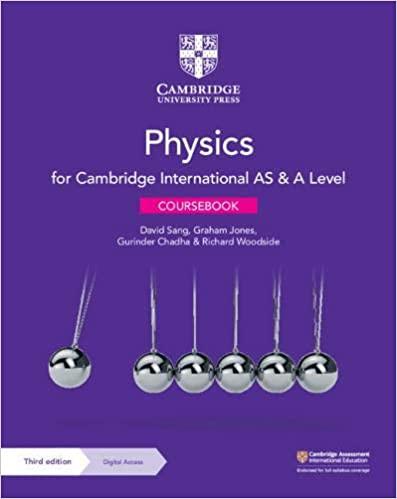Question
ing from the smallest subatomic particles to the largest galaxies and provide us with the tools to explain the behavior of matter and energy. In





ing from the smallest subatomic particles to the largest galaxies and provide us with the tools to explain the behavior of matter and energy. In this essay, we will explore some of the key principles that underpin the study of physics.
Do the entire questions:
One of the most fundamental principles of physics is the conservation of energy. This principle states that energy cannot be created or destroyed, but only transformed from one form to another. This means that the total amount of energy in a system remains constant over time. For example, when a ball is thrown into the air, it gains kinetic energy as it moves upward. As it reaches the top of its trajectory, this kinetic energy is converted into potential energy. When the ball falls back to the ground, the potential energy is converted back into kinetic energy. The total amount of energy in the system remains constant throughout this process
Another important principle of physics is the conservation of momentum. Momentum is a measure of the motion of an object and is defined as the product of an object's mass and its velocity. The conservation of momentum states that the total momentum of a closed system remains constant unless acted upon by an external force. This principle has wide-ranging applications, from the study of collisions to the behavior of particles in a magnetic field.
The principle of relativity is another key concept in physics. This principle states that the laws of physics are the same for all observers in uniform motion relative to one another. This means that there is no preferred frame of reference in the universe, and the laws of physics are the same regardless of where an observer is located. This principle has been confirmed by numerous experiments, including the famous Michelson-Morley experiment, and is a cornerstone of modern physics.
One of the most intriguing principles of physics is quantum mechanics. This branch of physics deals with the behavior of particles on the smallest scales, such as atoms and subatomic particles. According to quantum mechanics, particles can exist in multiple states at once, and their behavior is described by probabilities rather than definite outcomes. This principle has led to the development of numerous technologies, including the laser and the transistor, and has transformed our understanding of the natural world.
Finally, the principle of entropy is a fundamental concept in thermodynamics. Entropy is a measure of the disorder or randomness of a system, and the second law of thermodynamics states that the entropy of a closed system always increases over time. This means that energy is always moving from areas of higher concentration to areas of lower concentration, and that the universe as a whole is moving towards a state of maximum entropy or disorder.
In conclusion, the fundamental principles of physics provide us with a powerful framework for understanding the natural world. From the conservation of energy and momentum to the principles of relativity and quantum mechanics, these concepts have revolutionized our understanding of the universe and have led to countless technological advancements. By continuing to explore these principles, we can unlock new insights into the workings of the universe and continue to expand our knowledge of the natural world.









Step by Step Solution
There are 3 Steps involved in it
Step: 1

Get Instant Access to Expert-Tailored Solutions
See step-by-step solutions with expert insights and AI powered tools for academic success
Step: 2

Step: 3

Ace Your Homework with AI
Get the answers you need in no time with our AI-driven, step-by-step assistance
Get Started


